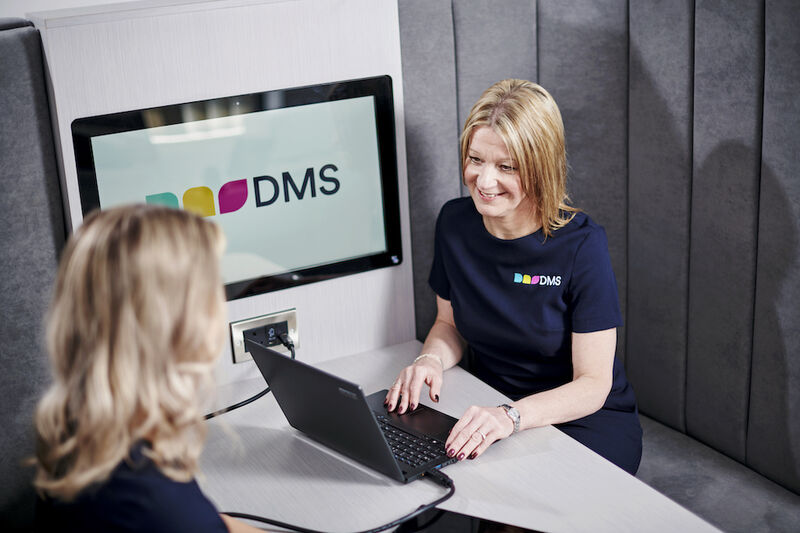The integration of technology in the classroom has been steadily increasing, and interactive screens, more commonly known as interactive whiteboards, have become a crucial part of any modern classroom. Keep reading to find out how interactive whiteboards help to make lessons more engaging, accessible and future-ready.
What are Interactive Whiteboards?
Interactive whiteboards are like giant touch screens for classrooms. They're interactive digital displays that connect to a computer and allow teachers to interact with digital content using a special pen or just their fingers.
Imagine a super-sized tablet mounted on the wall. Teachers can use it to show videos, play educational games, or write notes—all while keeping students involved.
Impact on Teaching and Engagement
The use of interactive screens in the classroom has led to a more dynamic form of teaching. Educators are now able to incorporate multimedia content, real-time annotations, and interactive exercises into their lessons. This multimedia approach caters to various learning styles and has been shown to increase student engagement, participation, and understanding.
Key Features of DMS’s Digital Whiteboards
DMS’ interactive screens offer a variety of features, including multi-touch capabilities, high-definition displays, and easy integration with other digital tools and platforms. This allows for a more versatile and immersive teaching experience.
Catering to Educational Needs
These digital whiteboards facilitate a range of educational activities, from collaborative projects and presentations to interactive quizzes and simulations.
Teachers can easily tailor their lesson plans to include diverse multimedia content, such as videos, images, and interactive modules, making learning more dynamic and accessible to all students, regardless of their learning style.
By transforming traditional teaching methods into interactive, multimedia experiences, these digital whiteboards are not only enhancing the way educators teach but also how students learn.
Advantages of Using Digital Whiteboards in Classrooms
The incorporation of digital whiteboards in educational settings has revolutionised the traditional classroom, offering a multitude of benefits that enhance the learning experience.
Enhancing Student Engagement and Participation
Interactive screens are a game-changer in stimulating student engagement and participation. These dynamic tools transform the classroom into an interactive learning environment where students are not just passive listeners but active participants.
Engaging and Participatory Lessons
Interactive screens facilitate a hands-on approach to learning. Teachers can use these tools to create interactive lessons that require student involvement, such as dragging and dropping items on the screen, drawing, or even participating in interactive quizzes. This interactivity keeps students engaged and makes learning more enjoyable.
Accommodating Different Learning Styles
Digital whiteboards are an effective tool in catering to various learning styles, making education more inclusive and effective.
Visual, Auditory, and Kinesthetic Learning
For visual learners, digital whiteboards offer vivid illustrations and videos. Auditory learners benefit from audio features, like explanations and narrations, while kinesthetic learners engage with the touch-screen functionality. This multimodal approach ensures that every student’s learning needs are met.
Creating Inclusive Learning Environments
By accommodating different learning styles, interactive screens help create an inclusive environment where every student has an equal opportunity to learn and succeed. This inclusivity is vital in modern education, where diversity in learning styles is increasingly recognised and valued.
Implementing Interactive Screens in Educational Settings
Implementing these technologies in schools requires strategic planning and training to ensure their effective use.
Training Educators to Maximise the Use of Interactive Screens
Effective utilisation of digital whiteboards hinges on proper training for educators. It’s essential that teachers are not only comfortable with the technology but also adept at using it to enhance their teaching.
Preparing Students for a Digital Future
Interactive screens are more than just educational tools; they are gateways to the digital world. Their use in classrooms plays a crucial role in preparing students for a future where digital literacy is paramount.
By regularly interacting with digital whiteboards, students develop essential digital skills that are increasingly necessary in higher education and the workforce. These skills include digital communication, problem-solving in a digital environment, and the ability to interact with various digital platforms.
Digital whiteboards also foster critical thinking and adaptability—skills that are vital in a rapidly changing digital landscape. The interactive nature of these screens encourages students to think critically about the information presented and to engage actively with content, preparing them to be adept learners and professionals in the future.
Interactive Whiteboards at DMS
DMS’ digital whiteboards have a significant impact on modern educational experiences. They transform traditional classrooms into interactive, engaging, and inclusive learning environments.
For schools looking towards the future, integrating DMS’s interactive screens into your classrooms is a step in the right direction. These tools offer opportunities for enhanced learning experiences and prepare students for a digital future.
Contact DMS today to explore how our interactive screens can transform your educational environment and set your students on the path to success in the digital age.









